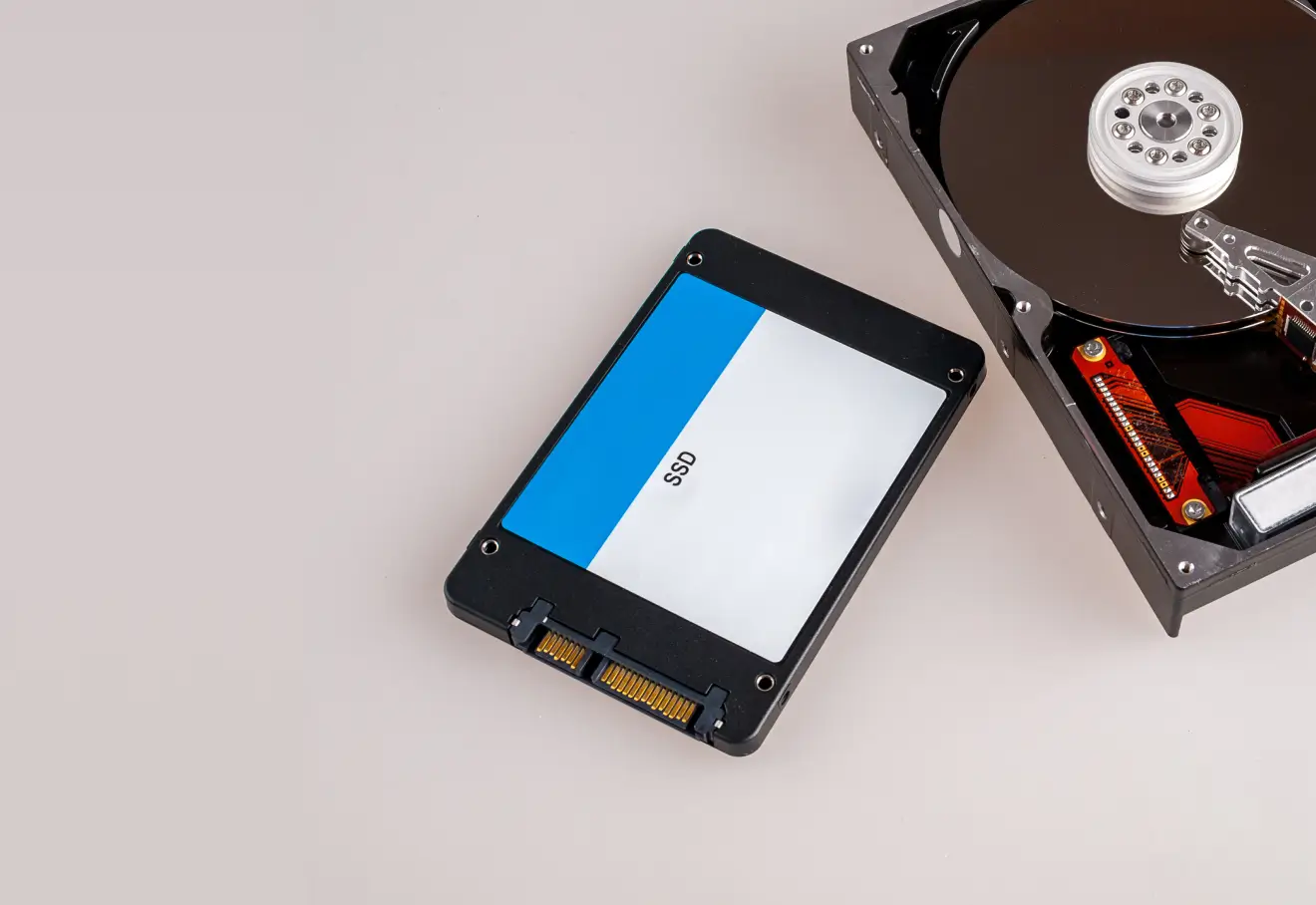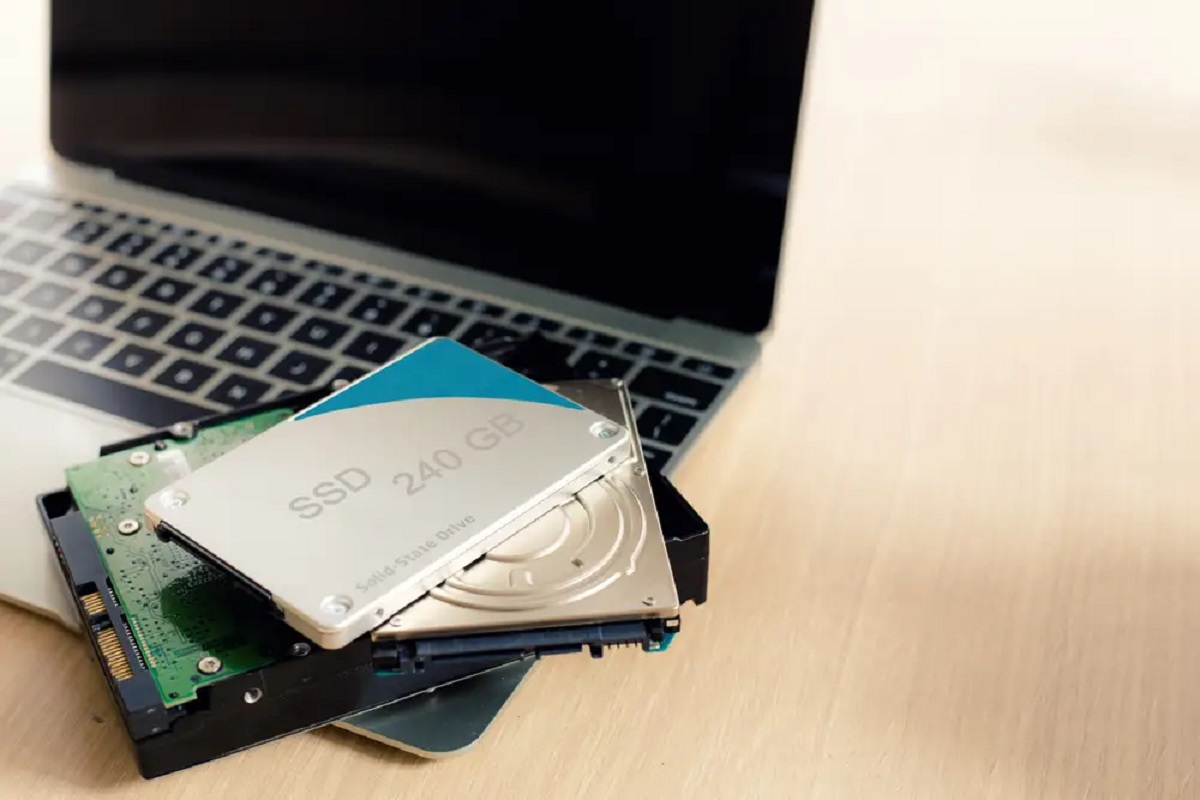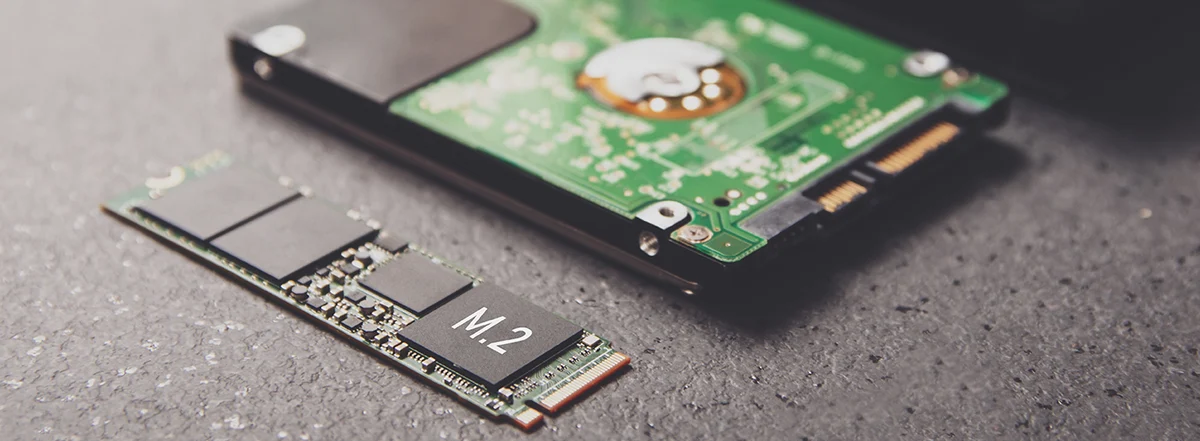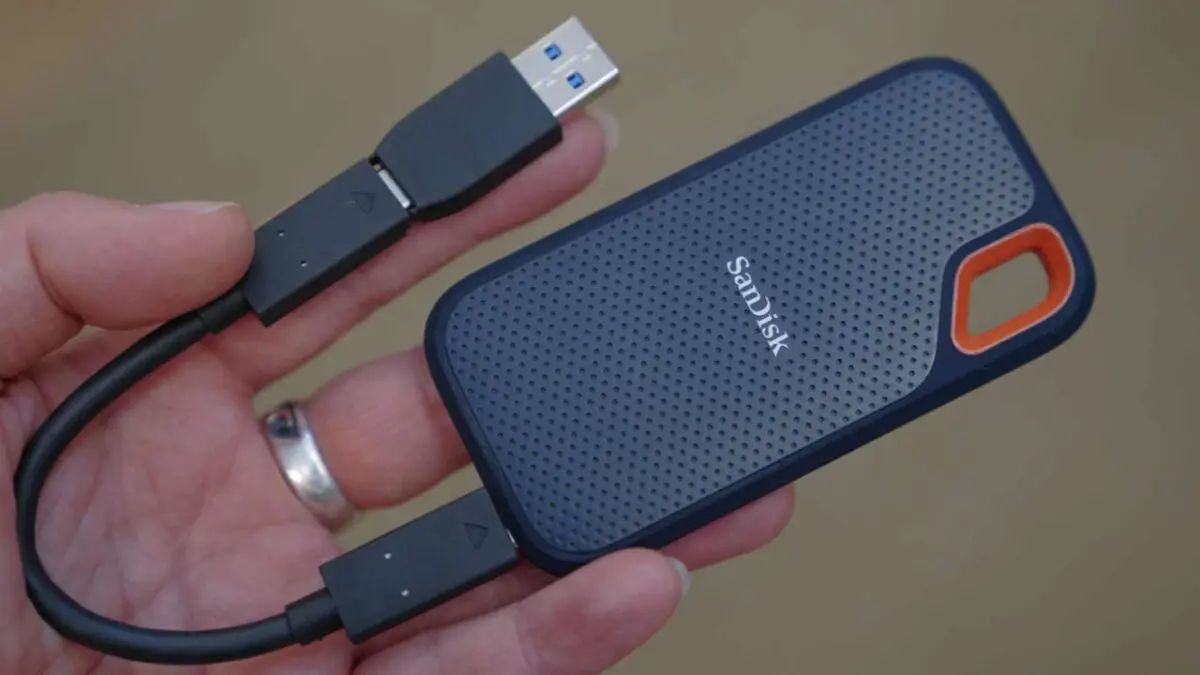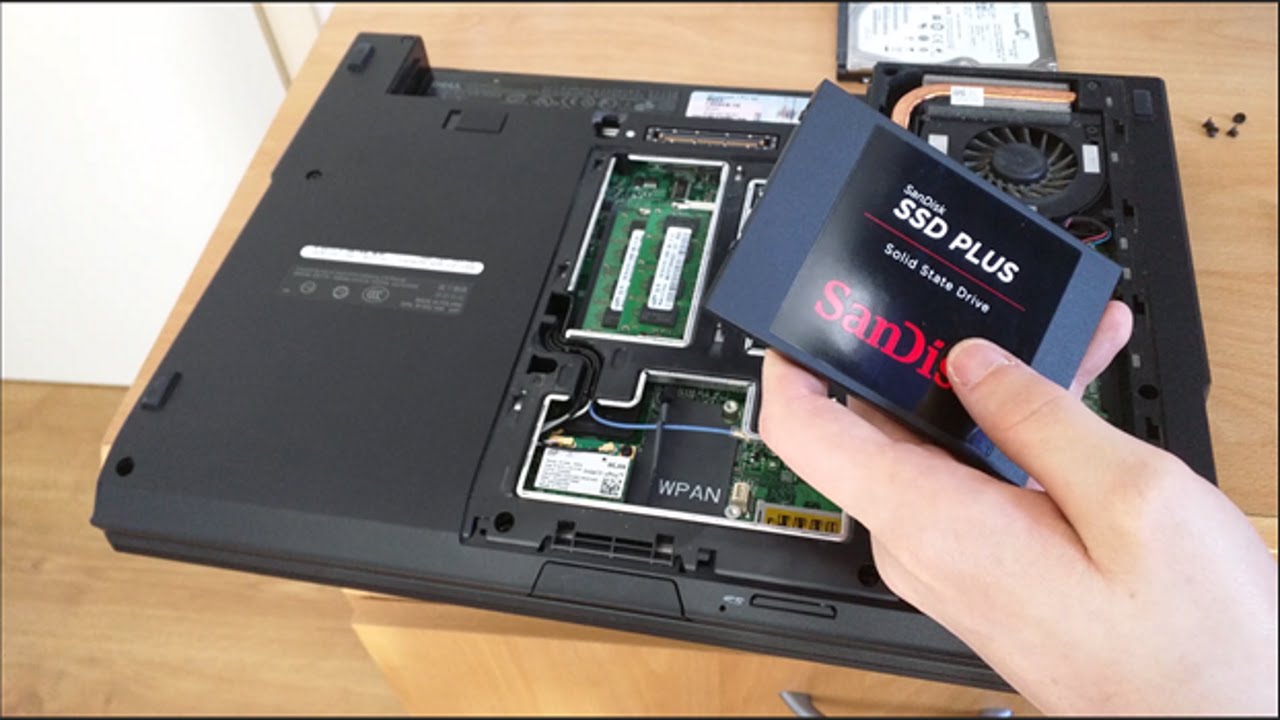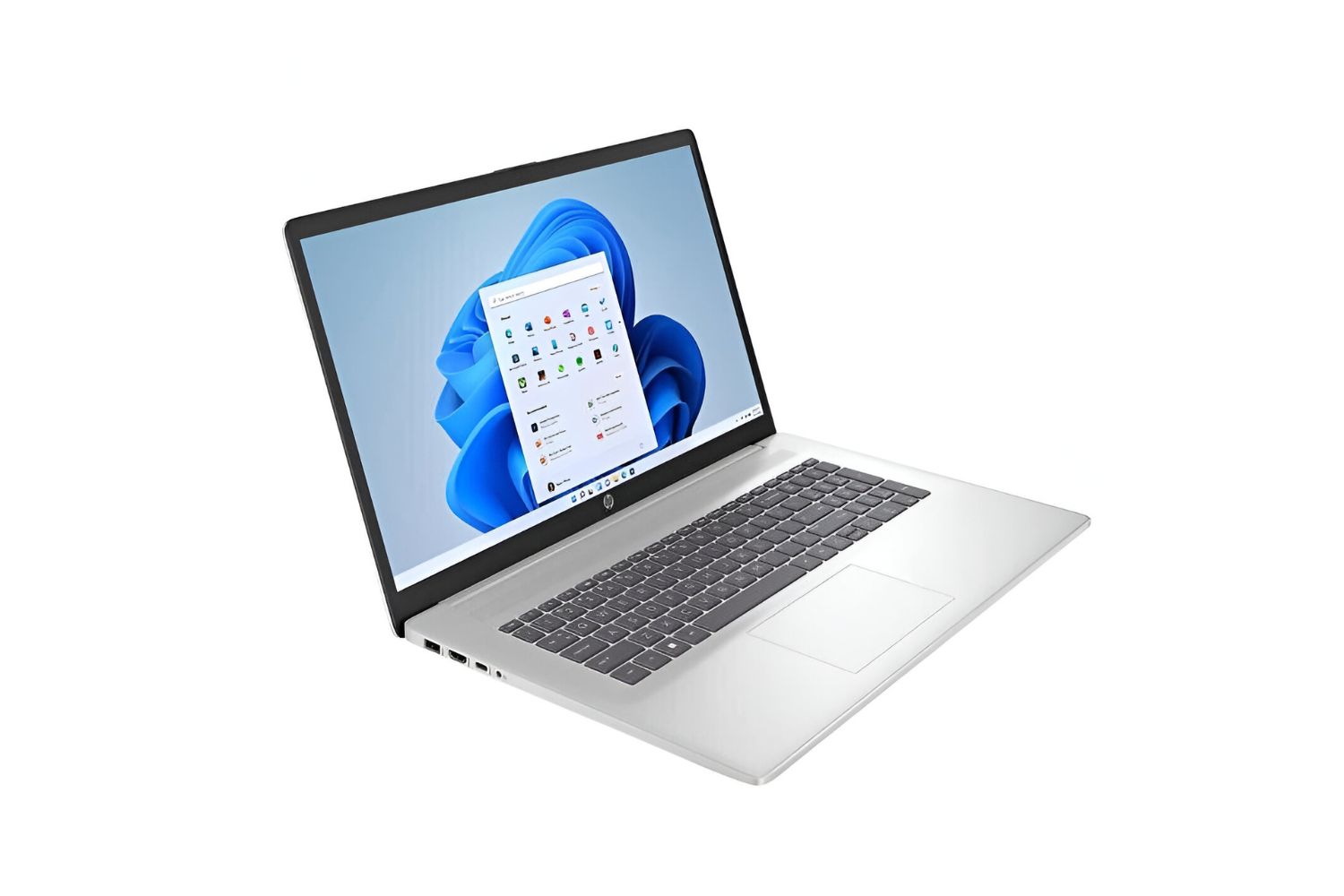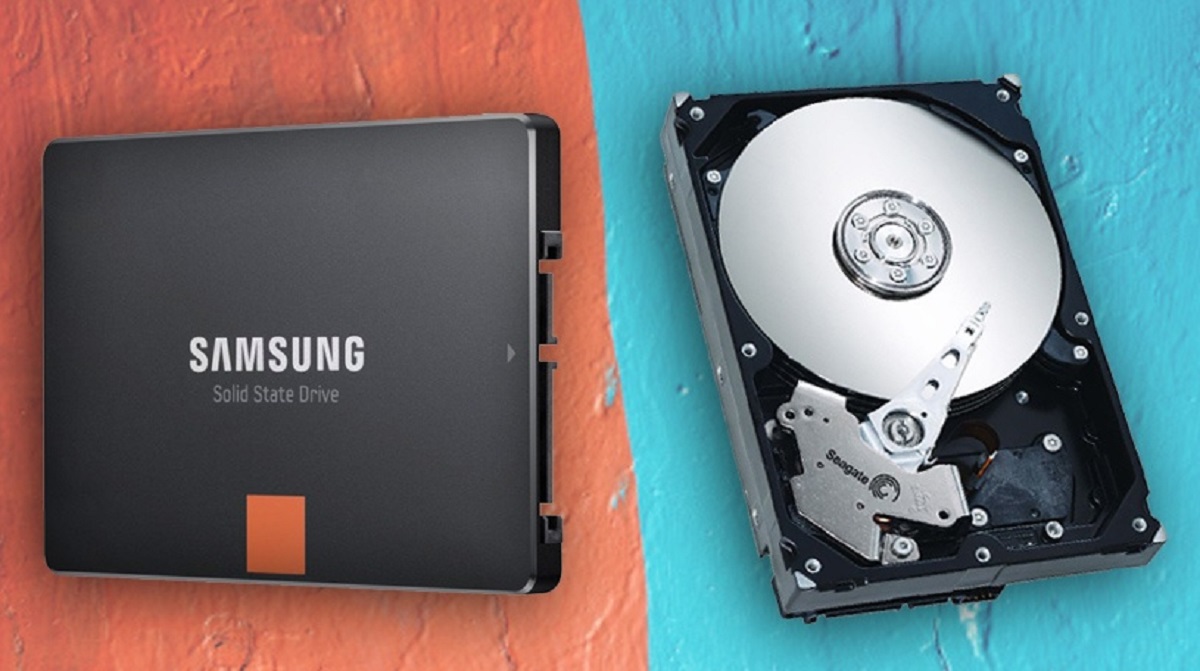Introduction
When it comes to computer storage technologies, two types stand out: hard drives and solid state drives (SSDs). These two storage devices have become the standard options for storing data in computers, laptops, and servers. While both serve the same purpose of storing digital information, they are fundamentally different in terms of technology, performance, and cost.
In this article, we will dive deep into the differences between hard drives and solid state drives. We will explore their respective definitions, basic functionality, physical components, performance, power consumption, reliability, and price points. By understanding these differences, you will be better equipped to make an informed decision when choosing the right storage device for your needs.
It’s important to note that the choice between a hard drive and a solid state drive depends on several factors, including the intended use, budget, and personal preferences. While hard drives have been the go-to option for many years due to their affordability and large storage capacity, solid state drives have gained popularity in recent years for their speed and durability.
Throughout this article, we will outline the key distinctions between hard drives and solid state drives to help you understand which option may be best for your specific requirements. Let’s dive in!
Definition and Basic Functionality of Hard Drive
A hard drive, also known as a hard disk drive (HDD), is a traditional storage device that has been a staple in computers for several decades. It consists of one or more spinning platters coated with a magnetic material, along with an armature that moves a read/write head over the platters to access and store data.
The basic functionality of a hard drive involves the rotation of the platters at high speeds, typically between 5,400 to 7,200 revolutions per minute (RPM), while the read/write head scans the surface to read and write data. The data is stored magnetically in sectors on the platters, with each sector containing a fixed amount of data.
When you save a file, the data is written onto the platters by the read/write head. Similarly, when you retrieve a file, the read/write head accesses the corresponding sector on the platters and reads the data, which is then sent to the computer’s processor for further processing.
Hard drives are known for their affordability and large storage capacities. They are commonly available in sizes ranging from a few hundred gigabytes to several terabytes. This makes them ideal for users who need to store large amounts of data, such as media files, documents, and applications.
Another advantage of hard drives is their ability to retain data even when the computer is powered off. This makes them a reliable choice for long-term data storage. Additionally, hard drives can be easily replaced or upgraded, allowing for flexibility in terms of storage capacity.
However, hard drives have a few drawbacks. Due to the mechanical nature of their components, they are susceptible to physical damage and can be slower in terms of read and write speeds compared to solid state drives. The moving parts also contribute to higher power consumption and noise levels.
Despite these limitations, hard drives continue to be widely used due to their affordability and high storage capacities. They are commonly found in desktop computers, external storage devices, and servers where cost-effectiveness and capacity are prioritized over speed and power efficiency.
Definition and Basic Functionality of Solid State Drive
A solid state drive (SSD) is a modern storage device that has gained popularity in recent years. Unlike a hard drive that uses spinning platters and read/write heads, an SSD employs flash memory chips to store and retrieve data. This innovative technology makes SSDs faster, more durable, and more efficient than traditional hard drives.
The basic functionality of a solid state drive involves the use of NAND flash memory cells to store data. These cells can be accessed and written to without any moving parts, which results in faster data transfer speeds and reduced latency.
When data is saved to an SSD, it is stored in the form of electrical charges within the NAND flash memory cells. Each cell represents a binary state, either storing a 0 or a 1. When retrieving data, the SSD reads the electrical charges from the appropriate cells, converting them back into usable information.
One of the key advantages of SSDs is their incredible speed. The absence of mechanical components allows for near-instantaneous data access, resulting in faster boot-up times, quicker application launches, and snappier overall system performance. This makes SSDs a great choice for tasks that require high-speed data transfer, such as gaming, multimedia editing, and heavy multitasking.
In addition to speed, SSDs are also known for their durability. Since there are no moving parts, there is a lower risk of mechanical failure, making them more resistant to damage from drops or vibrations. This durability makes SSDs a reliable storage option for portable devices like laptops and ultrabooks.
Furthermore, SSDs consume less power than hard drives. The absence of spinning platters and mechanical read/write heads results in lower energy consumption, leading to longer battery life for laptops and reduced power costs for desktop computers and servers.
Despite these advantages, SSDs do have some limitations. Firstly, they are generally more expensive than hard drives, especially when it comes to larger storage capacities. SSDs are available in various sizes, ranging from a few hundred gigabytes to a few terabytes, but the cost per gigabyte is still higher compared to hard drives.
Additionally, SSDs have limited write endurance compared to hard drives. Over time, the flash memory cells degrade with each write operation, reducing their lifespan. However, modern SSDs have implemented wear-leveling algorithms and advanced error correction techniques to mitigate this issue and improve the overall durability of the drives.
In summary, solid state drives offer incredible speed, durability, and power efficiency compared to traditional hard drives. While they may be more expensive and have limited write endurance, their performance benefits make them a popular choice for both consumer and professional applications.
Comparison of Physical Components
When comparing hard drives and solid state drives, one of the key differences lies in their physical components. Hard drives consist of spinning platters made of magnetic materials, along with read/write heads and an armature mechanism that moves the heads over the platters. On the other hand, solid state drives utilize NAND flash memory chips to store and retrieve data, without any moving parts.
The physical components of a hard drive are susceptible to mechanical failure due to the rotating platters and read/write head movement. This makes hard drives more prone to damage from physical shocks, drops, or vibrations. In contrast, solid state drives have no moving parts, which makes them more resistant to physical damage and results in increased durability.
Since hard drives have mechanical components, they produce audible noise during operation. The spinning platters and moving read/write heads generate a noticeable humming or clicking sound. In contrast, solid state drives are completely silent as they do not contain any moving parts.
In terms of size, hard drives are typically larger and bulkier compared to solid state drives. Hard drives require additional space for the rotating platters and the mechanisms to move the read/write heads. Solid state drives, being solid-state devices, are generally smaller in size and more compact. This makes them suitable for thinner and lighter devices such as ultrabooks and tablets.
Due to their difference in physical components, hard drives and solid state drives also differ in weight. Hard drives tend to be heavier due to their mechanical parts and larger form factor. Solid state drives, being smaller and composed of lighter materials, are lighter in weight. This weight advantage of SSDs is especially relevant for laptops and portable devices where every ounce counts.
Furthermore, hard drives require more power to operate due to the spinning and moving parts. The rotation of the platters and the movement of the read/write heads consume significant amounts of energy. On the other hand, solid state drives consume less power as they do not have any mechanical components. This results in improved power efficiency, longer battery life for laptops, and reduced electricity costs for desktop computers and servers.
In summary, the physical components of hard drives and solid state drives contribute to differences in terms of durability, size, weight, noise, and power consumption. Hard drives rely on mechanical parts and spinning platters, while solid state drives utilize semiconductor technology without any moving parts. These distinctions are important factors to consider when choosing between the two storage options.
Performance Differences
When it comes to performance, solid state drives (SSDs) have a significant advantage over hard drives. The absence of mechanical parts in SSDs allows for faster data access and transfer speeds, resulting in quicker overall system performance.
One of the main factors contributing to the superior performance of SSDs is their low latency. Since there are no moving parts involved in reading or writing data, the response time of an SSD is significantly faster than that of a hard drive. This means that applications and files load more quickly, resulting in a smoother and more responsive user experience.
In addition to low latency, SSDs also boast impressive read and write speeds. The NAND flash memory used in SSDs allows for simultaneous reading and writing operations, which results in faster data transfer rates. This makes SSDs ideal for tasks that involve large file transfers, such as video editing or gaming.
Furthermore, SSDs excel in random access times. Traditional hard drives need to physically spin to access data, which can introduce delays. SSDs, on the other hand, can fetch data from any location on the drive almost instantaneously, regardless of its physical location. This random access advantage of SSDs greatly improves the speed of tasks that involve accessing multiple files simultaneously, such as launching applications or searching for specific data.
Another aspect where SSDs outshine hard drives is boot-up time. Due to their faster read speeds, SSDs allow for significantly quicker system boot-up times compared to hard drives. This means that you can start using your computer or laptop within seconds, rather than waiting for the operating system to load.
While hard drives might be slower in terms of performance compared to SSDs, it’s important to note that the difference in everyday usage might not be as noticeable for basic tasks such as web browsing or word processing. However, for demanding applications or tasks that involve intensive data transfer, SSDs clearly offer a substantial performance boost.
In summary, solid state drives offer superior performance compared to hard drives. With their low latency, faster read and write speeds, improved random access times, and quicker boot-up times, SSDs provide a significant performance advantage for tasks that require fast data access and transfer. However, for basic computing needs, a hard drive’s performance might still be sufficient.
Power Consumption Differences
Power consumption is another important factor to consider when comparing hard drives and solid state drives (SSDs). Due to their mechanical components, hard drives tend to consume more power compared to SSDs, which have no moving parts.
Hard drives require power for various components, including the spinning platters and the armature mechanism that moves the read/write heads. As a result, hard drives generally have higher power requirements, especially during data read and write operations.
In contrast, SSDs consume less power due to their solid-state design. Since there are no moving parts involved, SSDs mainly rely on electronic components and require minimal power for normal operation. This not only results in improved power efficiency but also contributes to longer battery life for laptops and other portable devices.
The power consumption difference becomes more relevant when considering the overall system energy usage. In desktop computers and servers, where multiple hard drives might be installed and running continuously, the power draw can be significant. By using SSDs instead of hard drives, the overall power consumption can be reduced, leading to lower electricity costs and a smaller environmental footprint.
Furthermore, the lower power consumption of SSDs also has other practical advantages. Since they generate less heat, SSDs typically require less cooling, resulting in quieter operation and potentially reducing the need for additional cooling fans or heat dissipation systems.
It’s worth noting that the power consumption difference between hard drives and SSDs can vary based on specific models and technologies. While SSDs generally consume less power, advances in hard drive technology, such as energy-efficient or solid-state hybrid drives, can narrow the power consumption gap between the two storage options.
Overall, when power consumption is a concern, SSDs offer a clear advantage over hard drives. Their lower power requirements result in improved energy efficiency, longer battery life in portable devices, reduced heat generation, and potentially lower overall system power consumption.
Reliability Differences
Reliability is a crucial aspect to consider when comparing hard drives and solid state drives (SSDs). Both storage devices have different characteristics that can affect their overall reliability.
Hard drives, with their mechanical components and moving parts, are more susceptible to mechanical failures. The spinning platters and read/write heads can experience wear and tear over time, leading to potential failures. Additionally, hard drives are sensitive to physical shocks or vibrations, which can cause damage to the delicate internal components.
On the other hand, SSDs, being solid-state devices with no moving parts, are inherently more durable and resistant to mechanical failure. They can withstand shocks, vibrations, and other physical stresses better than hard drives. Moreover, SSDs have a lower failure rate due to the absence of mechanical parts that can wear out over time.
Another factor that affects reliability is the lifespan of the storage device. Hard drives are known to have a longer average lifespan compared to SSDs. This is because the mechanical components in hard drives can be replaced or repaired, extending the life of the drive. In contrast, SSDs have a limited write endurance, meaning that they can only withstand a certain number of write cycles before the cells degrade. However, modern SSDs have implemented wear-leveling algorithms and advanced error correction techniques, which help distribute write operations evenly across the memory cells and improve the overall durability of the drives.
It’s important to note that both hard drives and SSDs can experience failures, albeit with different failure modes. Hard drives are more prone to mechanical failures, such as head crashes or motor failures, which can result in data loss. SSDs, on the other hand, can experience electronic component failures or sudden data corruption. However, in general, SSDs have a lower overall failure rate compared to hard drives.
To ensure data integrity and minimize the risk of data loss, it’s advisable to regularly back up important files regardless of the storage device being used. Implementing proper backup strategies, such as regular backups to external drives or cloud storage, can provide an additional layer of protection for your data.
In summary, while both hard drives and SSDs can experience failures, SSDs offer better reliability due to their solid-state design, which eliminates mechanical components and reduces the risk of physical damage. However, it’s important to keep in mind that data backups are crucial for both types of storage devices to safeguard against any unexpected failures or data loss.
Price Differences
Price is a significant factor to consider when choosing between a hard drive and a solid state drive (SSD). Historically, hard drives have been more affordable and offered larger storage capacities, making them a cost-effective choice for many users.
Hard drives are available in a wide range of capacities, from a few hundred gigabytes to several terabytes, at relatively lower prices per gigabyte. This makes hard drives the preferred option for users who require large storage capacities without breaking the bank.
On the other hand, SSDs have traditionally been more expensive compared to hard drives. SSDs utilize NAND flash memory, which is costly to manufacture, resulting in higher prices per gigabyte. However, as SSD technology has evolved and become more widespread, the prices have gradually decreased over time.
While SSDs may still be more expensive than hard drives on a cost-per-gigabyte basis, their performance benefits and other advantages make them a compelling option for many users. The faster read and write speeds, improved responsiveness, and reduced power consumption of SSDs can justify the additional cost for those who value speed and efficiency in their computing experience.
It’s worth noting that the price difference between hard drives and SSDs also depends on the storage capacity. Generally, as the capacity increases, the price difference becomes more noticeable. Smaller SSDs, such as those with capacities of 120GB or 250GB, might be relatively closer in price to hard drives of similar size.
Additionally, it’s important to consider the intended use and requirements when evaluating the cost difference between hard drives and SSDs. If large storage capacity is a priority and performance is not a significant concern, a hard drive might be the more cost-effective option. However, if speed, durability, and power efficiency are key considerations, investing in an SSD could provide a much better user experience in the long run.
Ultimately, the choice between a hard drive and an SSD will depend on your specific needs, priorities, and budget. While hard drives offer a more budget-friendly option with larger storage capacities, SSDs provide a performance boost and other benefits that may be worth the additional expense for certain users.
Conclusion
When it comes to choosing between a hard drive and a solid state drive (SSD), there are several factors to consider. Both storage options have their own set of advantages and disadvantages, and the decision ultimately depends on your specific needs, budget, and priorities.
Hard drives are known for their affordability and large storage capacities, making them a popular choice for those who require ample space for storing large amounts of data. They are commonly used in desktop computers, external storage devices, and servers where cost-effectiveness and capacity are prioritized over speed and power efficiency.
On the other hand, SSDs offer significant performance benefits over hard drives. With their low latency, faster read and write speeds, improved random access times, and quicker boot-up times, SSDs provide a substantial boost in overall system performance. They are particularly well-suited for tasks that involve high-speed data access and transfer, such as gaming, multimedia editing, and heavy multitasking.
SSDs also have additional advantages such as durability, power efficiency, and silent operation. Their solid-state design makes them more resistant to physical damage, and they consume less power, resulting in longer battery life for laptops and reduced electricity costs for desktop computers and servers.
However, it’s important to note that SSDs are generally more expensive than hard drives, especially when it comes to larger storage capacities. Additionally, they have limited write endurance compared to hard drives. Nonetheless, advances in technology have helped improve the durability and cost efficiency of SSDs.
In conclusion, the choice between a hard drive and an SSD ultimately depends on your specific needs and budget. If affordability and large storage capacity are your main priorities, a hard drive may be the right choice for you. However, if speed, durability, and power efficiency are important factors, investing in an SSD can greatly enhance your computing experience. Assess your requirements, consider the pros and cons, and make an informed decision based on what best suits your needs.







